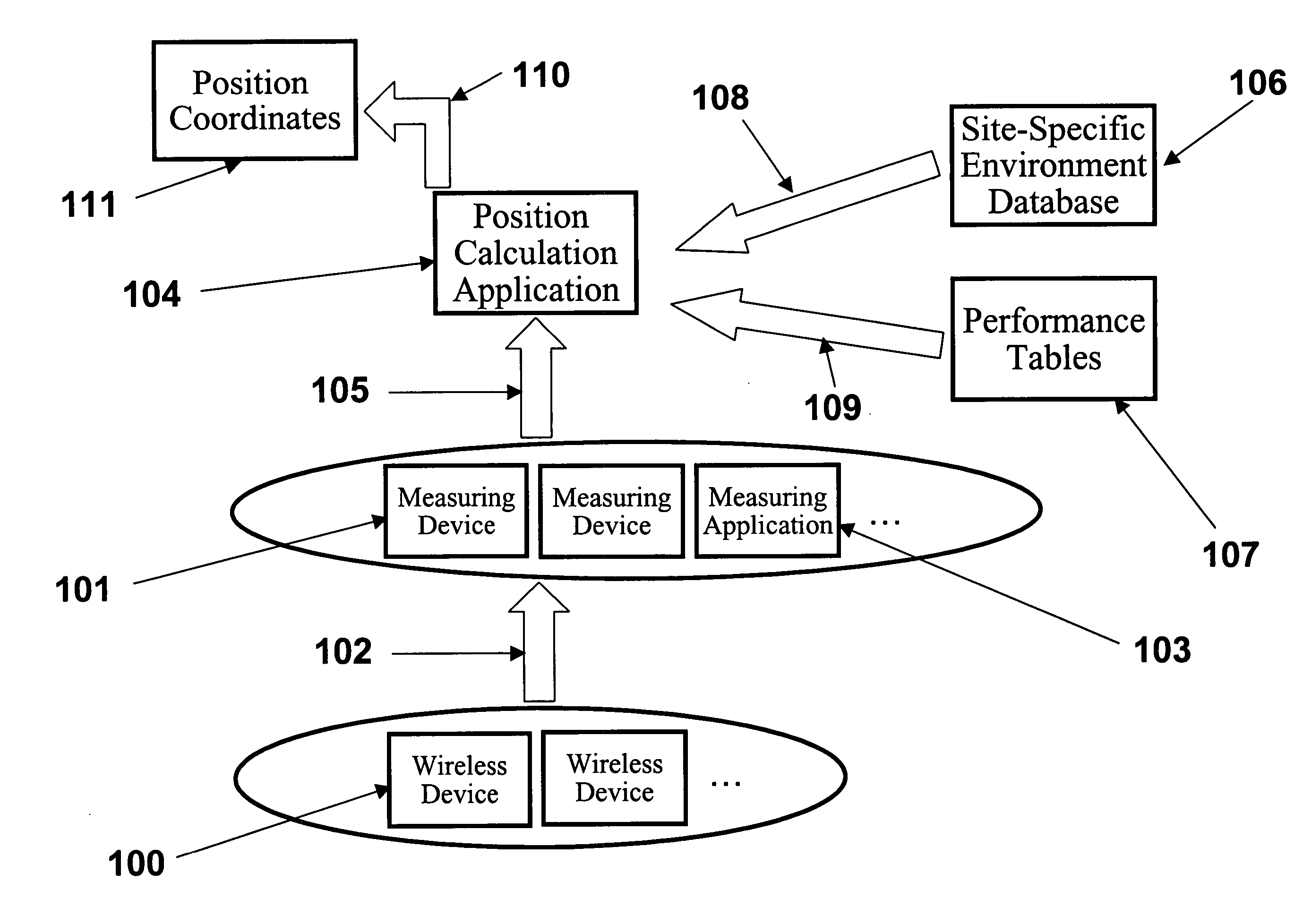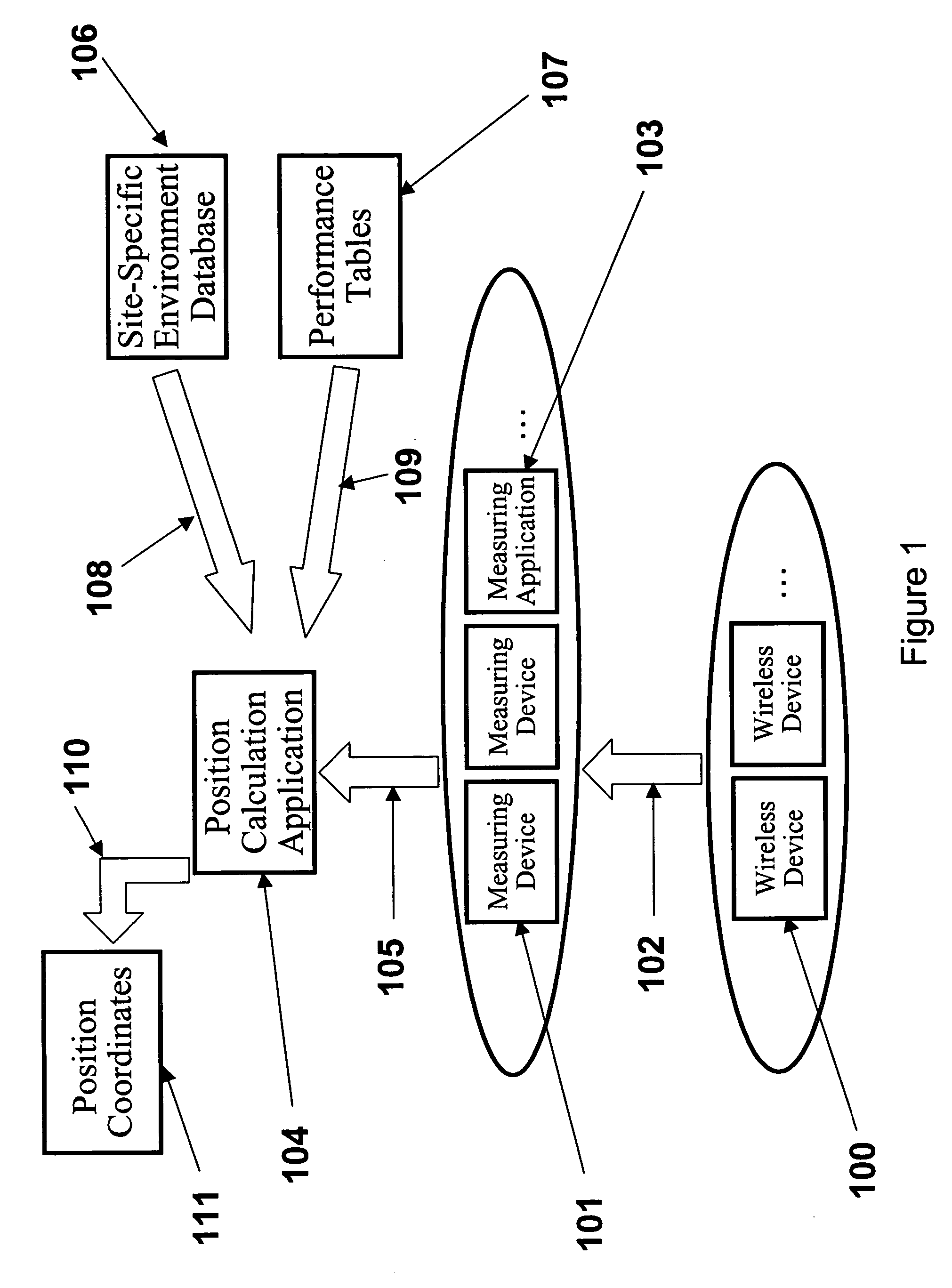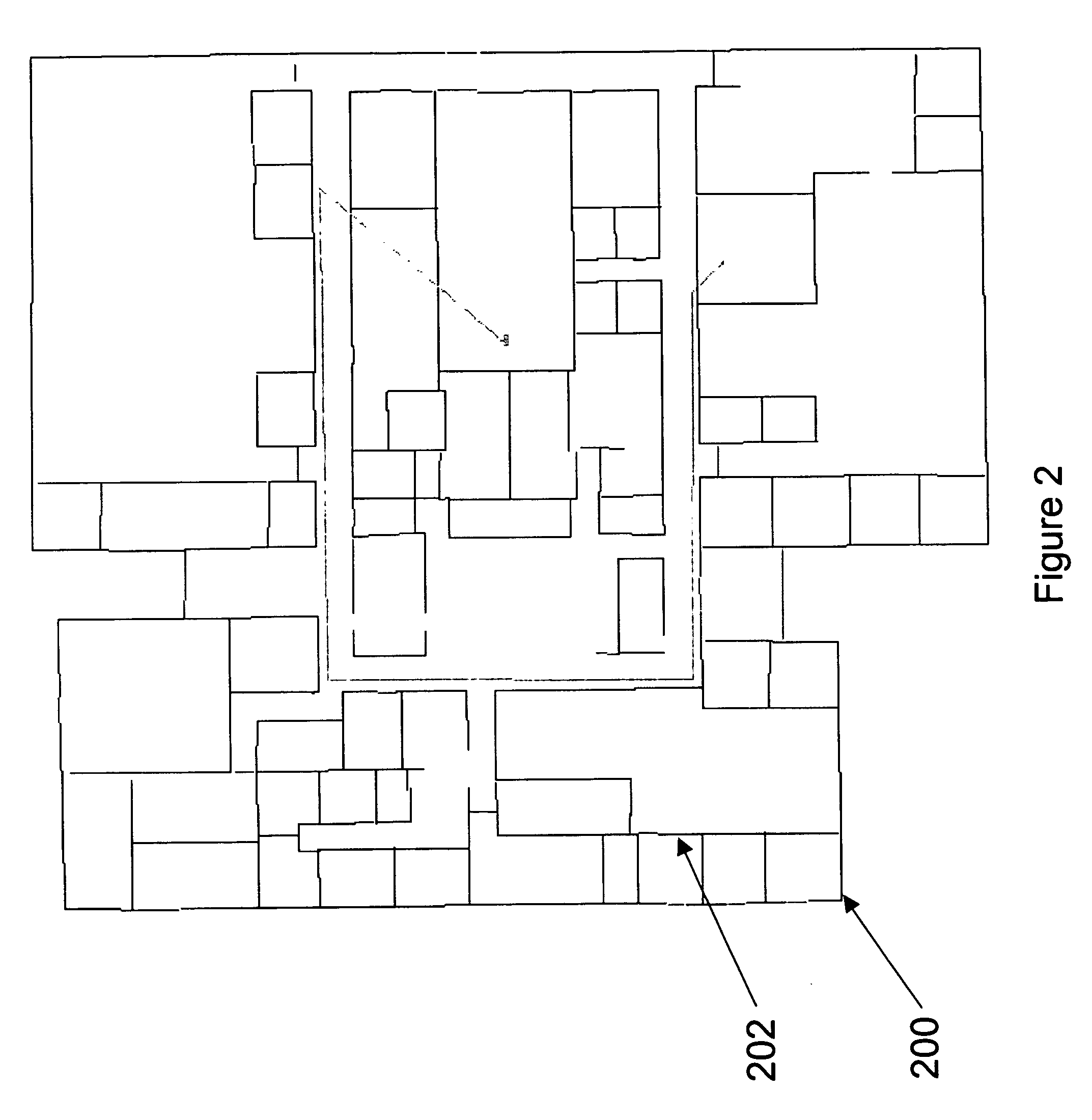System, method, and apparatus for determining and using the position of wireless devices or infrastructure for wireless network enhancements
a wireless network and infrastructure technology, applied in direction finders using radio waves, instruments, wireless communication, etc., can solve the problems limiting the technique, and not utilizing a mesh with one or more performance lookup tables associated with each vertex, etc., to achieve the effect of consuming additional network bandwidth
- Summary
- Abstract
- Description
- Claims
- Application Information
AI Technical Summary
Benefits of technology
Problems solved by technology
Method used
Image
Examples
Embodiment Construction
[0115] Using the present method, it is now possible to quickly and accurately determine the positions of detectable wireless devices within a known environment, and to further use position knowledge to provide enhanced capabilities for wireless and combined wired / wireless networks. The present invention is a significant advance over the prior art through its use of a novel method of using one or more performance look up tables to map RF channel characteristics into actual positions within an environmental model, and through its exploitation of this novel position estimation method to provide enhanced quality of service, power management, security, and interference detection and mitigation, and autonomous or adaptive network configuration in wireless networks.
[0116] Referring now to FIG. 1, there is depicted the logical representation of a wireless communication network as it relates to the present invention. In FIG. 1, one or more wireless devices 100 exist within a wireless networ...
PUM
 Login to View More
Login to View More Abstract
Description
Claims
Application Information
 Login to View More
Login to View More - R&D
- Intellectual Property
- Life Sciences
- Materials
- Tech Scout
- Unparalleled Data Quality
- Higher Quality Content
- 60% Fewer Hallucinations
Browse by: Latest US Patents, China's latest patents, Technical Efficacy Thesaurus, Application Domain, Technology Topic, Popular Technical Reports.
© 2025 PatSnap. All rights reserved.Legal|Privacy policy|Modern Slavery Act Transparency Statement|Sitemap|About US| Contact US: help@patsnap.com



